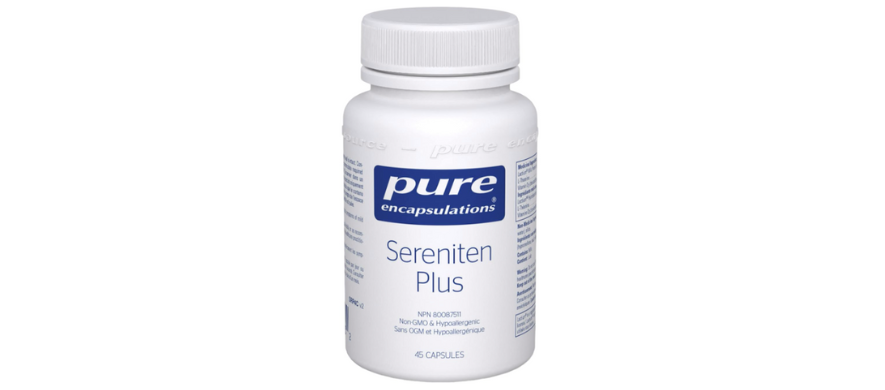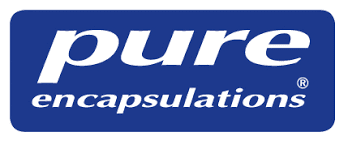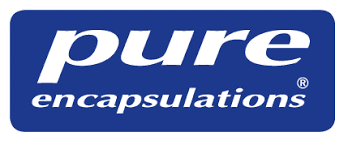Recent surveys indicate that 70 percent of parents with newborn children sacrifice at least three hours of sleep every night during the first year. A healthy individual should sleep eight to nine hours a night, so that represents a highly significant 30 percent reduction. And even though sleep improves after the first year, on average, parents do not return to their pre-birth sleep patterns for six years and many never fully recover.1
Sleep disturbance is not confined to just parents. In fact, 30 percent of North Americans suffer from chronic insomnia, while 67 percent report difficulty falling or staying asleep at least once per week. People sleep 20 percent less today than they did 100 years ago, with 2 in 10 Canadians using prescription sleep medication on a regular basis.
In the general population, the number one cause of insomnia is stress and anxiety. The World Health Organization has declared sleep loss an epidemic, and numbers continue to rise due to the cyclic effect linking chronic stress and loss of sleep. Ninety percent of visits to doctor’s offices are due to stress-related issues and illness. For new parents, nocturnal feeding and childcare especially impact sleep patterns, and this only adds to the stress-related insomnia associated with looking after young children.
Maternal stress in pregnancy
In addition, new mothers are at increased risk due to disruption of their neuro-endocrine stress pathway (HPA axis). During pregnancy, the placenta releases CRH (corticotropin-releasing hormone). Normally released from the hypothalamus in the brain, this is the hormone that stimulates the stress pathway (HPA axis) and—through ACTH (adreno-corticotropic hormone)—directs the adrenals, our stress glands, to release cortisol. This additional placental CRH causes levels of cortisol to rise threefold by the third trimester, which places the new mother at even greater risk of sleep disturbance before and after childbirth.

Fortunately, the fetus is partially protected from the high cortisol by an enzyme known as 11B-hydroxysteroid dehydrogenase type 2 or HSD11B2. When maternal stressors are high, however, due to lack of sleep, a busy schedule, or other lifestyle factors, there is a greater transfer of cortisol from the mother to the fetus; this can not only affect fetal neuroendocrine development, but also exacerbate dysfunction of a mother’s stress pathway.2
The chronic stress problem
Persistent stimulation of the stress pathway occurs through fetal CRH stimulation, as noted above, but also through lifestyle factors such as having to juggle kids and work, having financial problems, or just trying to keep up with family commitments. Even things such as consuming an inflammatory diet or having a brief illness represent “stress” to the body and add to the problem.
When we encounter any stressor, physical or emotional, our hypothalamus, the grand controlling gland in the brain that orchestrates the stress response, stimulates the release of CRH. This directs the pituitary gland, also in the brain, to release ACTH, which ultimately stimulates the release of our three stress hormones: cortisol, adrenaline, and noradrenaline from the adrenal glands. This “fight or flight response” is designed to allow our body to deal with the proverbial sabre-toothed tiger. It pushes us into the sympathetic side of our nervous system, increasing our heart rate, redirecting blood to our extremities, fuelling our muscles, and increasing our alertness. Once dealt with, a feedback loop between the periphery and the brain shuts the pathway down and allows us to recover, returning us to the quiet parasympathetic side. It’s a great system, but only designed for about one hour of stress per day.

Unfortunately, our modern-day lifestyles come with multiple stressors, both real and perceived that, although nowhere near as threatening as the tiger, elicit the same stress response. What’s more, is that most of these stressors remain unresolved; the tiger doesn’t run away! The subsequent repetitive and chronic stimulation of our stress pathway (HPA axis) results in a failure of the feedback mechanism, such that it never actually switches off. We remain stuck in the “fight or flight” sympathetic world even when there are no stressors around. Once established, this HPA dysfunction with loss of negative feedback is difficult to fix. Deep breathing exercises or meditation alone are not nearly strong enough to reset our nervous system and allow us back to the calm parasympathetic side.
Why “fight or flight” mode leaves us fighting for sleep
Being stuck in that “fight or flight” sympathetic side enables mechanisms that ensure we don’t go to sleep or stay asleep; grabbing forty winks while trying to outpace the tiger would not be ideal! For example, activation of our stress pathway inhibits production of adenosine, a neuromodulator that generally builds during the day and makes us sleepy come bedtime. A lack of this chemical makes it difficult to fall asleep.3
In addition, cortisol impairs the pineal gland’s production of melatonin, our “sleeping hormone.” This dysregulates our sleep cycle and, more importantly, inhibits our ability to transition into stage-4 delta-wave deep sleep. HPA axis disruption leads to cortisol levels peaking between 2 and 4 a.m., which is when the majority of stage-4 sleep occurs and melatonin should be at its highest. Cortisol’s impairment of melatonin prevents this important sleep period. Stage-4 sleep is where our body recovers and repairs; doing everything from making a new hormone or antibody, to reducing inflammation and increasing detoxification. Without adequate stage-4 sleep there is no healing or rejuvenation. In itself, this is an additional stressor to the body, only adding to the cycle of stress, impaired sleep, and poor health.4

There are other ways that stress and lack of sleep are connected, strengthening the adverse effect they have on one another. Cortisol stimulates the release of our body’s main inflammatory mediators, interleukin-6 (IL6), tumour necrosis factor-alpha (TNFa), and interleukin-1-beta (IL1b). The purpose of this release is to protect the body when in a fight or flight situation as it promotes blood clotting, immune defense, and healing. Once you return to the quiet “campfire” parasympathetic side, the stress hormones normalize, allowing the inflammatory chemicals to stabilize.
Living with chronic stress and high cortisol means we continually secrete these inflammatory substrates, which has a profound effect on our health and the development of disease. Adding fuel to the fire, these substrates enter the brain and directly stimulate the HPA axis, independent of external stress.5 And if that wasn’t enough, lack of sleep stimulates the further production of those same inflammatory markers. In fact, sleeping 7 rather than 8 hours each night increases TNFa levels by 8 percent, IL6 by 7 percent, and CRP by 8 percent.6,7
The chronic stress solution
So that’s the bad news! The good news is that there is much we can do to reset this pattern and restore normality to our sleep and stress pathways. As mentioned above, while lifestyle changes, deep breathing, and meditation are useful, once the HPA axis becomes dysfunctional, other measures are required to reset it.
Lactium
One of the main treatments I use in my practice is a molecule originally discovered in breast milk; lactium, available as Sereniten Plus™. Researchers noticed that a child’s cortisol levels dropped during and after breast feeding. They questioned whether it was caused by the act of suckling or something in the breast milk. To find out, they compared feeding with breast milk, regular milk or formula from a bottle, and monitored the baby’s cortisol levels. Only the breast milk resulted in a drop in cortisol levels. Further analysis isolated one specific short protein molecule: casein decapeptide, a 10 amino acid sequence that was responsible for this affect.
Now made from regular milk, this simple protein sequence has powerful beneficial effects on the neuroendocrine system. It is the only supplement shown to reset receptors in the hypothalamus and pituitary gland, restoring feedback and balance to the stress pathway, reducing sympathetic hyperactivity, and returning the nervous system to the parasympathetic side. This amino acid protein also inhibits the excess release of cortisol, adrenaline, and noradrenaline from the adrenal glands directly. Lactium doesn’t just slow down the stress response; it halts it and returns the body and the nervous system to the relaxed “campfire” state, improving sleep and overall health.
Sereniten Plus™ also contains a green tea extract known as L-theanine. This protein acts to change brainwave activity from beta-wave to alpha-wave. The highly active beta-waves create anxiety, racing thoughts, and worry, while calming alpha-waves promote creativity, learning, and relaxation. The combination of lactium and theanine is tremendously beneficial in restoring normal sleep patterns by addressing both the underlying cause of sleep disturbance (stress) and promoting more restful brainwave activity.

(Patients often ask me whether they can take Sereniten Plus™ if they have a milk allergy or lactose intolerance. Yes, you can! Lactium doesn’t contain lactose and is considered hypoallergenic. The protein sequence is only 10 amino acids in length, and the immune system can only identify proteins 12 amino acids or longer).
Melatonin
Another key treatment is melatonin. There is a great deal of misinformation about melatonin. Firstly, it is not a sedative. It will not put you to sleep or keep you asleep. Rather, melatonin helps regulate the sleep-wake cycle and is responsible for allowing the brain to go into that healing delta wave stage-4 sleep that we need to heal. What is key is to take melatonin between 8 and 9 p.m. so that it peaks at 2 a.m.—the time it is normally released from the pineal gland. This follows our natural circadian rhythm, maximizing stage-4 sleep and falling by 6 a.m. so that we’re clear-headed and rested in the morning. (This is why taking it too late or in the middle of the night can result in some morning drowsiness).
Some of my patients tell me that they find melatonin causes excessively vivid dreams, but this only occurs if you take it without treating cortisol. The reason is that “dream sleep” or REM sleep is the stage after stage-4, and if you go into REM sleep with high cortisol, your dreams tend to be more “fight or flight.” To keep your dreams calmer when you transition from stage-4 healing sleep to REM, I treat cortisol at the same time using Sereniten Plus™.
Melatonin can be taken in many ways; a time-released pill such as Melatonin-SR™ is one I recommend. Best Rest™ is also a good option, as it combines melatonin with some calming herbs that help you fall asleep more quickly.

Glutathione & NAC
Finally, to help reduce the stress-related inflammatory response, I recommend a combination of liposomal glutathione and N-acetyl cysteine (NAC). Glutathione, often referred to as the “master antioxidant,” boosts the effects of other antioxidants, binds out heavy metals and toxins that generate inflammation, reduces the production of inflammatory substrates (specifically IL6, TNFa, NFK-b, and IL1B), and protects mitochondria, the powerhouse of our cells. It is the most powerful anti-inflammatory in the body. However, one thing glutathione cannot do is cross from the blood into the brain. That’s why I use NAC, the precursor molecule of glutathione. NAC passes easily across the blood-brain barrier; once in the brain, it gets converted into glutathione, which acts as a strong neural anti-inflammatory and detoxifier. Taken together, glutathione and NAC have a synergistic effect, allowing one to take a smaller dose with a higher therapeutic outcome.

New parents have a lot on their plate! They feel stressed, sleep-deprived, and exhausted. Parenthood is a wonderful experience, yet one that can have a lasting impact on individual health. The neuro-endocrine disruption from pregnancy and the stress of a new child adding to the regular rigors of daily life and work all contribute to a hyperactive stress pathway (HPA axis), sleep disturbance, and a heightened inflammatory response. Staying healthy and calm is not only key to your health, but also that of your child. Multiple studies have shown how stress also affects those close to us.8,9 A stressed parent leads to a stressed child. Taking control of your stress and your sleep involves many different approaches, including natural supplementation. Talk to your naturopathic doctor about getting your family back to the “campfire”!

Pure Encapsulations® is dedicated to providing nutritional supplements that are designed with integrity using premium ingredients backed by verifiable science, and held to the highest industry standards. We're also committed to advancing the science of nutrition and sharing our passion and knowledge for the greater good.
References
- Richter D. et al, 2019. Sleep, Long-term Effects of Pregnancy and Childbirth on Sleep Satisfaction and duration of First-time and Experienced mothers and fathers Apr 1;42(4).
- (Neuroendocrinology 2013; 98(2): 106-115)
- Leproult R. et al, 2010 Role of Sleep and Sleep Loss in Hormonal Release and Metabolism. Endocr Dev.;11-12
- Wilking M et al, 2013, Circadian Rhythm connections to stress. 19(2),192-208. W-P Chong, European Journal of Oncology Nursing 29 (2017) 79-84
- Sorrells S. et al, 2009; The Stressed CNS: When Glucocorticoids Aggravate Inflammation. Neuron Oct 15;64(1):33-9
- Patel, S. et al. 2009. Sleep Duration and biomarkers of Inflammation. Sleep;32(2):200-204
- Mullington J. et al, 2013. Sleep Loss and Inflammation. Best Pract Res Clin Endocrinol Metab; 24(5):775
- Lilianne R et al, 2009, Chemosensory Cues to Conspecific Emotional Stress Activate Amygdala in Humans. Plos One e 06415.
- Veronika E, et al, 2014, Psychoneuroendocrinology. Cortisol Increase in Empathetic Stress is Modualated by Emotional Closeness and observation Modality. 45:192-201





